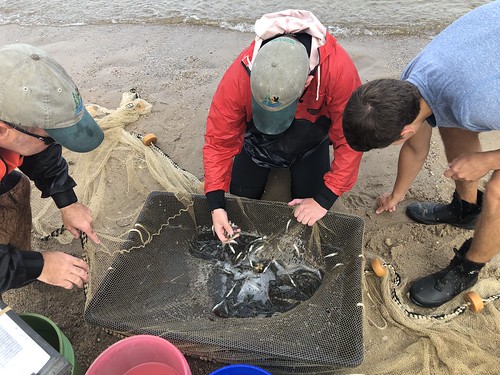Survey Finds Healthy Striped Bass Reproduction
Positive Outlook for Iconic Fish in 65th Annual Index
 The Maryland Department of Natural Resources announced results of its annual young-of-year striped bass survey in Chesapeake Bay, which documented healthy reproduction of the state fish. The 2018 young-of-year index is 14.8, higher than the 65-year average of 11.8.
The Maryland Department of Natural Resources announced results of its annual young-of-year striped bass survey in Chesapeake Bay, which documented healthy reproduction of the state fish. The 2018 young-of-year index is 14.8, higher than the 65-year average of 11.8.
Known locally as rockfish, striped bass spawn in Chesapeake Bay and its tributaries each spring. The juvenile striped bass survey is conducted annually to measure spawning success and help predict future abundance. The index represents the average number of young-of-year – those hatched in the current year – striped bass captured in each sample.
During this year’s survey, department biologists collected more than 36,000 fish of 55 species, including 1,951 young-of-year striped bass. Results show that white perch and American shad also experienced above-average spawning success this spring.
“Consecutive years of healthy reproduction is a great sign for the future of this iconic species,” Fishing and Boating Services Director David Blazer said. “The survey results are encouraging and complement our efforts to conserve and protect the striped bass fishery throughout the watershed for the benefit of anglers, commercial watermen and the species.”
The department has monitored the reproductive success of striped bass and other fish species in Maryland’s portion of Chesapeake Bay annually since 1954, making it one of the oldest fish community surveys in the nation. Twenty-two survey sites are located in the four major spawning systems: Choptank, Potomac and Nanticoke rivers and Upper Chesapeake Bay. Biologists visit each site three times during the summer, collecting fish with two sweeps of a 100-foot beach seine net. The fish are evaluated for age, size and other factors, and then returned to the water.
The Virginia Institute of Marine Science conducts a similar survey in the southern portion of Chesapeake Bay.


 1-888-373-7888
1-888-373-7888 233733
233733